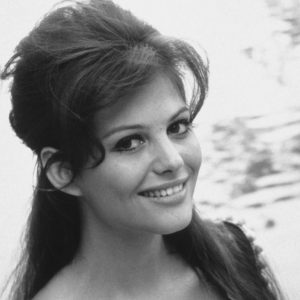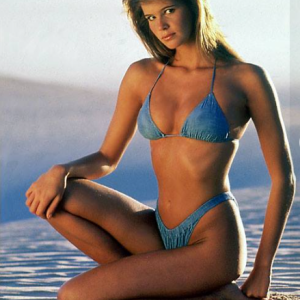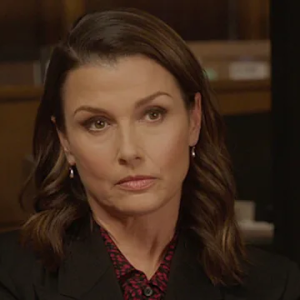What happens when Michael Keaton’s wild, scene-stealing presence meets Henry Winkler’s effortless charm? You get a comedy masterpiece!
With Shelley Long’s undeniable charisma, Keaton and Winkler’s dynamic chemistry, and even a blink-and-you’ll-miss-it cameo from a young Kevin Costner, the film is packed with unforgettable moments.
But the real gem? Shelley Long’s iconic “magic in the kitchen” scene, which continues to captivate audiences. Ready to dive into the hidden layers of this beloved classic? Let’s get started!
From mortuary to chaos
Released in 1982, Night Shift quickly became a cult comedy favorite, showcasing Michael Keaton’s magnetic energy and offering a glimpse into Ron Howard’s rising talent as a director. The film’s offbeat humor and memorable performances helped cement its status as a beloved classic.
The film, which takes place in a morgue in New York City, centers on the unexpected alliance between mild-mannered night shift worker Chuck Lumley (played by Henry Winkler) and his new, quirky, and extremely ambitious coworker Bill Blazejowski (played by Michael Keaton).
The two end up in unexpected and humorous situations after they discover an unusual business opportunity: using the morgue as a base for a posh escort service.
The remarkable chemistry among the three characters is what really sets this film apart, not just the witty humor. Their characters are all quite likable, which adds to the enjoyment of watching.
Callback after callback
It’s impossible to talk about Night Shift without highlighting Michael Keaton’s unforgettable performance.
This film perfectly captures Keaton’s signature 1980s style—witty, energetic, and irresistibly charismatic. However, many may not recall just how fresh-faced he was at the time.
Before Night Shift, Keaton had only appeared in a low-budget comedy and the short-lived CBS series Report to Murphy. This role became his big break, marking his first major leading performance and setting the stage for his rise to stardom.
He remembers, “I don’t know how many times I had to go back in and audition.” “All that happened was callback after callback.”
Ultimately, Keaton was able to persuade the producers and writers. Keaton was excellent as Bill “Blaze” Blazejowski, with his wide Irish face, thinning brown hair, darting green eyes, and quick-talking manner. His intensity and timing were perfect, but there was also this additional detail:
Keaton later remarked of his ascent to fame, “I came along just at the time when the changeover from television to film actors was becoming possible.”
Michael Keaton would turn up the music and blast Bruce Springsteen, particularly “10th Avenue Freeze-Out” from the Born to Run album, in order to truly get into the swing of his role.

He remembers, “I deliberately went to see it alone on opening day.” It was fantastic, and I wanted to sit in the center of the theater in the afternoon. To be honest with you, I am at a loss for words.
When he cast Keaton in Night Shift, Ron Howard, the man who helped Keaton steal the film, truly struck gold.
Keaton outperformed the more seasoned Henry Winkler, who was already well-known on television for his portrayal of “The Fonz,” in scene after scene. The door to Hollywood opened wide open for Keaton as reviews praised his performance. But without Henry Winkler’s unobtrusive but crucial assistance, Keaton’s success—and his whole film career—might not have begun.
In an interview with the Boston Globe, Ron Howard disclosed, “Henry was offered either part and he opted for the quieter one.”
Then he assisted Michael in stealing the photo. He offered Michael many options. He would say things like, “I know (you’ll get laughs) if you take this routine one step further,” to Michael.
Henry Winkler purposefully contrasted his iconic, tough-guy character, Fonzie, with the timid morgue director in Night Shift. “I thought I’d play Richie Cunningham for once,” he wrote on Twitter.
Given their obvious chemistry, it’s surprising that Henry Winkler and Michael Keaton never worked together again after Night Shift. Winkler didn’t like Keaton. They had a humorous, memorable, and well-balanced on-screen dynamic.
Their relationship’s origins during Night Shift’s filming may be the cause of their lack of subsequent cooperation.
Henry wasn’t totally sure he wanted to work with Michael when they first read together. “The guy’s talented, but I don’t know if I’m comfortable working with him,” Howard later remarked.
He was reassured by Ron Howard that this unease was beneficial since it reflected the relationship between their characters in the movie, which showed that Chuck was uneasy with Bill. Their early tension gave their on-screen relationship a real, unbalanced texture, but it eventually subsided.
Well-known people who nearly got the legendary role
Mickey Rourke and Kurt Russell are rumored to have tried out for the part of Bill Blazejowski. Furthermore, Michael Keaton wasn’t the first pick, according to Ron Howard.

Additionally, they had reached out to John Candy in an attempt to cast Bill Murray, Dan Aykroyd, and John Belushi. But none of them were interested, either because they didn’t want to pursue it or because they thought the part was too minor.
One of the writers, Lowell Ganz, told me after seeing Michael’s work that “Keaton is going to be a star for somebody, and he might as well be a star for us,” Ron Howard revealed.
Scene improvised
You can’t help but think that Michael Keaton was making stuff up as he went along throughout Night Shift; he has that innate comic talent that makes impromptu, funny moments come to life.
When a blind man asks Winkler and Keaton for spare change, it’s one of the greatest improvised scenes. What does Keaton say? He sends a cheque to the man. The original Keaton!
In the film, did you see Ron Howard?
Ron Howard’s first film as director was a huge success, earning a healthy $21,095,638 at the box office. However, the former child actor was compelled to make his own appearance.
You can see Ron and his wife, Cheryl, kissing in front of Chuck’s (Henry Winkler) apartment complex if you look attentively.
Ron Howard himself plays the obnoxious saxophone in the subway scene. Naturally, a Ron Howard movie wouldn’t be complete without an appearance from his brother Clint Howard, who portrays the film’s eccentric character Jeffrey.
Kevin Costner appears
There are many well-known characters in some very early roles on Night Shift!
In a fleeting appearance, Kevin Costner plays a frat boy at the morgue party. Although he doesn’t speak, you can see him hanging out while Michael Keaton performs, holding a bottle on his head, wearing a checkered shirt, and a college cardigan tied around his waist.

Then there is Shannen Doherty, who makes her debut in a feature picture with a single line as a “Blue Bell” (similar to a Girl Scout) in an elevator sequence. Unexpectedly, these brief appearances by future celebrities give this oddball classic a bit more joy.
The origin of a famous song
Did you know that the iconic song “That’s What Friends Are For” was first heard during Night Shift? Rod Stewart originally recorded it for the 1982 soundtrack, but when Dionne Warwick, Elton John, Gladys Knight, and Stevie Wonder joined forces in 1986, it became a worldwide smash. Additionally, their rendition collected more than $3 million for AIDS research in addition to skyrocketing to the top of the Billboard charts.

The movie opens with the catchy Night Shift theme by Quarterflash and includes timeless songs like Van Halen’s “You Really Got Me” and the Rolling Stones’ live rendition of “Jumpin’ Jack Flash.”
Playing a prostitute was not Shelley Long’s preference.
For those who haven’t watched Night Shift or don’t remember, Shelley Long plays Belinda, a kind but tough sex worker who lives next door to Henry Winkler’s character, Chuck.
Belinda links up with Chuck and Bill (Michael Keaton) after her pimp is slain, and they agree to assist her by running her company in an absolutely crazy manner.
Shelley Long’s performance in Caveman (1981) had won Ron Howard over. But she was in California doing another film when he wanted her for Night Shift (1982). Howard persuaded her to come to Hollywood for a brief two-day vacation in spite of this.
The charming actress was requested to come back the next day to see Henry Winkler after she tried out for the part of Belinda, the female lead, during that period.
Despite her initial reluctance to play a prostitute, Long eventually agreed to the part after spending some time researching it.
She arrived at our house looking like a hooker, read to Henry, and immediately impressed us. Even on the videotape, their moments were already being prepared, Ron remarked.
“The happiest, healthiest hooker…”
Comedies about prostitutes were surprisingly popular in the early 1980s. The Best Little Whorehouse in Texas, a film based on the Broadway musical and starring Burt Reynolds and Dolly Parton, also came out around the same time as Night Shift.

Tom Cruise transformed his parents’ home into a brothel in Risky Business, which made him famous the following summer.
“The happiest, most wholesome hooker you’ll ever see on screen” is how critics described Shelley Long’s portrayal of Belinda, a prostitute who wins Chuck over. Some even joked that she could be the leader of a Girl Scout troop.
Chuck then responds that he wants scrambled eggs when Belinda asks what sort he wants. She is obviously preparing fried eggs when she begins to cook.
However, she somehow dumps scrambled eggs onto their plates after the eggs are done! She clearly changes things up when Chuck speaks to her, but really, who is paying attention to the eggs when Shelley Long is delivering so much charm?
Among the many amusing moments in Night Shift’s iconic egg sequence is when Shelley Long’s character, Belinda, prepares Chuck breakfast. Henry Winkler’s response is anything but Fonz-like in the comical scene where Chuck first witnesses Belinda cooking in her panties!
The character of Shannen Doherty
Another error from the movie that might have gone unnoticed by anybody who appreciates details is this one: Chuck calls Shannen Doherty’s role a “Bluebell” when, in fact, she is billed as a “Bluebird.”
He must have confused flowers for birds.
“He likes a part of my anatomy.”
Shelley Long wasn’t exactly excited to be seen in her underwear, but her character Belinda was okay with it. “It was difficult for me when the cameras weren’t rolling,” she acknowledged.

In addition, she asked her husband in jest what he thought of her roaming around in her underpants during Night Shift. She laughed and remarked, “He didn’t mind me running around in my skivvies—that’s a part of my anatomy he likes.”
The morgue in Night Shift was really built on a specially constructed set in Hollywood, California, although many of the scenes were shot in New York.
Many scenes, such as the one in which Bill locates potential customers outside cinemas and the one in which Chuck, Bill, and Belinda flee at the conclusion, were filmed in Manhattan’s Times Square.
A small error did, however, slip in during the Big Apple sequences.
In one scene, Chuck remains on the subway as Bill declares, “This is my stop,” and exits. If you look closely, however, you can see that the train next to Bill is the Times Square – Grand Central shuttle, which doesn’t stop in between.
With a different cast, this film would not be possible. Michael Keaton, Shelley Long, and Henry Winkler have a relationship that is magical, bringing heart, humor, and memorable moments to life.
In addition to being a comedy, Night Shift tells the tale of improbable friendships, personal development, and discovering connections in the most unusual places.





